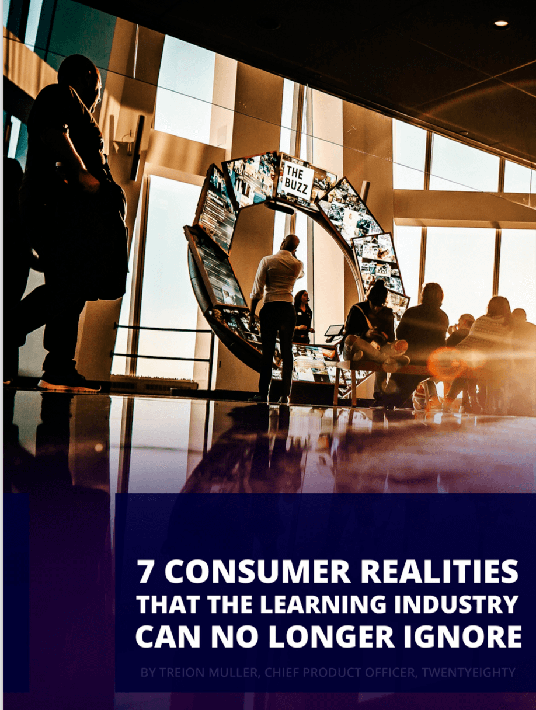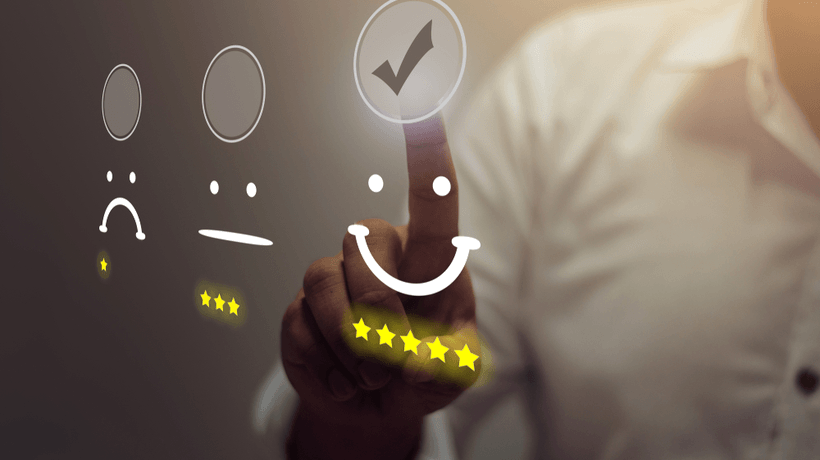What Consumers Of Learning Want (Part 2): Conciseness, Quality, And Relevance
In the first part of the series, titled 'What Consumers of Learning Want (Part 1): Parity Between Their Personal and Professional Lives', I wrote about how we live two separate lives when it comes to learning. I wrote about how active participants we are in the digital revolution going on around us, in our personal lives, while in our professional lives, we are passive observers to a bygone era since if we want to find answers or training we must attend a two-day workshop a month from now.

In that article, I also introduced the first of 7 consumer realities that L&D can no longer ignore:
1. I Want It Now!
This article focuses on the next 4 consumer realities. As you look over these consumer realities, please replace the word "it" in the title with answers, information, solutions, resolutions, personal development, tools, resources, or anything that applies to the acquisition of knowledge, or desired behavior change.
2. It Has To Be To The Point
Along with consumers wanting immediate access comes the demand that whatever "it" is, it must be quick, short, and to the point or risk losing the content consumer to the next learning fragment.
Learning Fragments
Learning fragments are the result of the Learning Explosion. They are the scattered bits of information and knowledge. Learning fragments can be found through many different sources such as social media sites, industry research sites, training workshops, videos, online communities, blogs, books, and apps. ("The Learning Explosion", book by Treion Muller and Matt Murdoch).
For example, organizers of TED (a nonprofit devoted to spreading ideas, usually in the form of short, powerful talks) believe that the ideal length of a presentation is 18 minutes, "and so all presenters—including Bill Gates and Bono—are required to come in under this mark". TED curator, Chris Anderson, explained the organization’s thinking like this: It [18 minutes] is long enough to be serious and short enough to hold people’s attention. It turns out that this length also works incredibly well online. It’s the length of a coffee break. So, you watch a great talk and forward the link to two or three people. It can go viral, very easily. The 18-minute length also works much like the way Twitter forces people to be disciplined in what they write. By forcing speakers who are used to going on for 45 minutes to bring it down to 18, you get them to really think about what they want to say. What is the key point they want to communicate? It has a clarifying effect. It brings discipline. (About TEDx)
But watch out, TED, consumers want things even shorter than 18 minutes. According to MInimatters, a video production, and marketing company, out of the top 10 most popular YouTube videos, the shortest was 42 seconds and the longest was 9 minutes and 15 seconds. (The Best Video Length for Different Videos on YouTube) And, according to Comscore Video Rankings Report, the average online content video was 4.4 minutes. This is significant because, according to a 2016 Wistia Video Length Study, for a video of 4-5 minutes, fewer than 60% of your viewers will stay with you through—as opposed to 75% for a 1-2 minute video.
3. It Has To Look Good And Work Well, Or I’m Dumping It
With so many options at our disposal, consumers have the luxury of being hyper-selective. And they are. We don’t stand for a lag in performance, in fact, 53% of people will leave a mobile site if it takes more than 3 seconds to load. 3 seconds! (Google Data, Aggregated, anonymized Google Analytics data from a sample of websites opted into sharing benchmark data, n=3.7K, Global, March 2016.)
9 out of 10 users will stop using an app if there are performance issues, and 86% of users deleted or uninstalled at least one mobile app because of performance problems. (AppDynamics and University of London. The App Attention Span study)
Consumers have been trained to expect perfection, and, if it’s not perfect, 46% of people report that they’d be unlikely to purchase from the same brand again. (Google/Purchased, "How Brand Experiences Inspire Consumer Action", U.S. smartphone owners 18+=2,010, brand experiences=17,726, April 2017.)
The UX also has to look great. In 2016, 21% of Millennials deleted an app from their phone if they didn’t like how it looked on their screen. (Comscore - The 2016 U.S. Mobile App Report) According to MIT Sloan’s article on digital disruption, "Companies should pay most attention to the adaptation gap with respect to customer engagement and experience. If companies don’t enable effective digital interactions with their customers, then those customers will go to competitors or startups that will". (MIT Sloan - Digital Disruption Is a People Problem)
The Boston Consulting group also added to this argument: "Our study shows that a positive mobile experience increases the repurchase rate and builds customer loyalty. More than 90% of B2B buyers reporting a superior mobile experience say they are likely to buy again from the same vendor compared with only about 50% of those reporting a poor mobile experience. ("Mobile Marketing and the New B2B Buyer", The Boston Consulting Group in partnership with Google, Oct. 2017)
Yes, consumers are a hard lot to please. With this kind of entitlement and selective behavior, you’d think consumers were royalty. The truth is they are. Kings and queens of their own personalized digital world, where they decide on the kingdom’s colors, theme songs, and even their own quirky entertainment fixes. Again, what are we in L&D doing to meet this challenge?
4. I Don’t Want All This Other Stuff
One of the biggest blind spots for companies operating in the L&D space is the belief that they have the "secret sauce" or perfect the paradigm-changing experience, and that the only way to achieve behavior change is by going through a 3-day immersive experience. While I do not disagree that immersive ILT training experiences can be very effective in changing behavior, I also know it doesn’t work very well when you decide to "go digital" and throw all the ILT materials online and expect the same impact. Much has been said on this topic over the years—but has the consumer been considered?
Most consumers don’t care for, or understand why all the excess context and content is necessary for a unique challenge they are seeking an answer for. They don’t want a day's worth of training if an hour, or less, will do. Neither will they stand for irrelevant and unrelated information anymore. For example, a full 70% of consumers who come across unoptimized page content will leave that page in search of another resource to complete their task. (30 UX Statistics You Should Not Ignore) People don’t want to waste their valuable time on pages or content that are not optimized for exactly what they want. Consumers bouncing from a page is the digital equivalent of them yelling at their computer screens—"just give me what I want!". But, surprisingly enough, 82% of those same employees do enjoy reading relevant content from their company blogs. (QuickSprout - Why Every Business Should Blog)
Herein lie the reason for this consumer sentiment—relevance. If it's not relevant to me, I am not interested.
Yes, it’s true we must keep "it" simple without all the cheese and fluff, but the key to a consumer’s heart is relevance. If what you provide helps the consumer meet a need, solve a problem, or answer a question, you’ll have a friend for life… well, at least until the next time you fire hose them with a bunch of irrelevant information. Then, they’re gone. So, what are we in L&D doing about it?
5. I Want To Paint The Picture
You may be asking yourself why? Why are consumers so obsessed with wanting to be in the picture? Simply put, they have been conditioned to believe that if they aren’t connected they’ll miss out on something important… like whoever the latest celebrity couple is and when and if they’ll be tying the knot. This is one of the byproducts of being so connected. We are constantly being bombarded with the sometimes-subtle vibration and sometimes obnoxious ding of our phones, and most often for the most unimportant reasons.
A Deloitte study in 2016 found that people look at their phones 47 times a day on average; for young people, it’s closer to 82 times a day. (Deloitte Report - Global mobile consumer survey: US edition) And, in 2013, Apple proudly announced that 7.4 trillion push notifications had been pushed through its servers—a trend that has only continued to grow.
Yes, today’s consumers are the most connected and looped in a generation we’ve ever seen. And, as a result, consumers have allowed their digital sidekicks to inform their behavior and often rule over them. Whether it’s an incessant desire to belong or the adrenaline rush of generating likes, retweets or follows, we have become a reactive society ruled by our technologies. Again, I ask, how are we in L&D engaging with this new reality?
The next, and last, article in the 3 part series will finish up with the last 2 consumer realities the learning industry can no longer ignore.
You may also want to read the whole ebook









